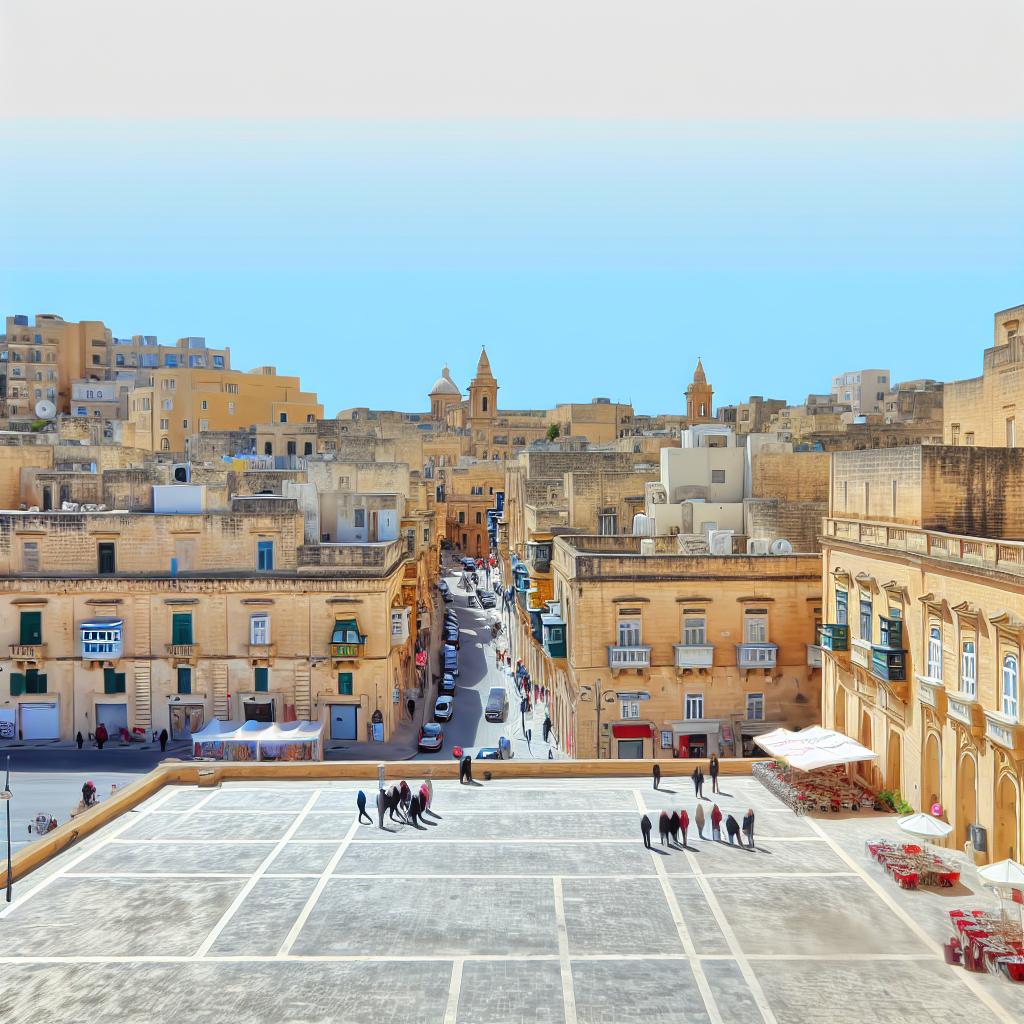The Charm of Valletta’s Historic City Center
Valletta, the illustrious capital of Malta, is famed for its remarkably preserved historic city center. This unique destination provides visitors with a rich tapestry of architectural grandeur, historical depth, and vibrant cultural life. As a recognized UNESCO World Heritage Site, Valletta offers an enriching experience that highlights its pivotal role in history and its contemporary cultural relevance.
Architectural Wonders
Valletta is a prominent example of Baroque architecture. The city’s construction was initiated in 1566, under the careful design of the Knights of St. John. This military order orchestrated the planning and building of the city to function as a stronghold, and remarkably, the layout has remained largely unaltered for centuries.
Among Valletta’s architectural gems is St. John’s Co-Cathedral, a true masterpiece of Baroque art and architecture. This cathedral is notable for its impressive facade and lavish interiors, which include intricately designed marble works and ornate gilt embellishments that appeal to art lovers and historians alike. Stepping into the cathedral is like stepping back into a time where artistry and religious devotion went hand in hand.
Another key landmark is the Auberge de Castille. Originally constructed to serve as a residence for the Knights from Castille, Leon, and Portugal, this building currently functions as the office of the Prime Minister of Malta. It stands as a testament to the adaptive reuse of historical buildings, preserving their legacy while giving them new purpose and function in modern governance.
Streets and Squares
Navigating through Valletta’s narrow streets, visitors can easily imagine themselves in a time long past, as the layout itself is a testament to its original conception as a fortified city. Walking these cobbled paths provides a vivid lens into Valletta’s vibrant history. The city’s main thoroughfare, Republic Street, pulses with activity, lined with a variety of shops and cafes that cater to both locals and tourists. Here, traditional Maltese products sit side by side with international brands, offering a shopping experience that is as diverse as the city itself.
The city also offers spots of tranquility such as the lower Barrakka Gardens. These gardens are not only a peaceful retreat from the bustling city life but also provide stunning vistas over the Grand Harbour, making them a perfect spot for reflection or simply enjoying the natural beauty Malta offers.
The Fortifications
Valletta’s robust fortifications are a focal point of its historical narrative. The city is encompassed by an extensive series of bastions, curtains, and cavaliers, all of which played a critical role in its defensive strategy. These structures served to protect the city from invaders and contribute to the story of Valletta’s resilience and strategic importance in the Mediterranean region. Walking along these walls, one can enjoy panoramic views of the surrounding landscapes, including the magnificent Grand Harbour, which has been an asset and a witness to much of Maltese history.
Cultural Significance
Beyond its architectural allure, Valletta boasts profound cultural significance. Appointed as the European Capital of Culture in 2018, the city hosted a myriad of artistic events, which brought attention to its vibrant cultural scene. This tradition has not waned, with ongoing performances and exhibitions ensuring that cultural vibrancy is a constant in the city. Valletta serves as a hub for creativity and artistic expression, with museums and galleries that host both historical artifacts and contemporary works, making it a crucible of old and new cultural ideas.
Practical Information for Visitors
For travelers eager to explore Valletta’s historic city center, practical considerations make the journey convenient and enjoyable. The city sits within easy reach of Malta’s public transport system, allowing for straightforward access from various parts of the island. Valletta itself is compact enough that it can be traversed on foot, which means visitors can deeply appreciate the city’s historical ambiance and architectural details at their own pace.
When visiting, take the opportunity to relax in one of the local cafes. Here, you can indulge in Malta’s unique culinary offerings, a delightful blend of flavors shaped by a diverse history of influence, from Arab to Sicilian and British culinary traditions. Maltese pastizzi, ftira, and fine wines offer a taste of the local traditions and ingredients.
In conclusion, Valletta’s historic city center is akin to a living museum. It provides profound insights into the past, while concurrently serving as a dynamic center for arts and culture in the present. Whether it is the history lover seeking tales of knights and fortresses, the architecture enthusiast marveling at Baroque masterpieces, or the culture aficionado experiencing diverse artistic expressions, Valletta stands out as a must-visit destination. Its timeless charm is sure to captivate and inspire all who wander through its storied streets.

